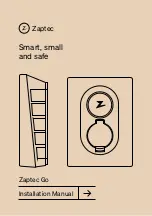
Along with the seat belts, front airbags work with the
instrument panel knee bolsters to provide improved
protection for the driver and front passenger. Window
bags also work with seat belts to improve occupant
protection.
The seat belts are designed to protect you in many types
of collisions. The front airbags deploy in moderate to
severe frontal collisions.
If your vehicle is so equipped, the window bag on the
crash side of the vehicle is triggered in moderate to
severe side collisions. But even in collisions where the
airbags work, you need the seat belts to keep you in the
right position for the airbags to protect you properly.
Here are some simple steps you can follow to minimize
the risk of harm from a deploying airbag.
1. Children 12 years and under should always ride
buckled up in a rear seat in an appropriate child restraint.
Infants in rear-facing child restraints should
NEVER
ride
in the front seat of a vehicle with a passenger front airbag.
An airbag deployment can cause severe injury or death to
infants in that position.
You should read the instructions provided with your
child restraint to make sure that you are using it properly.
2. All occupants should use their lap and shoulder belts
properly.
3. The driver and front passenger seats should be moved
back as far as practical to allow the airbag room to inflate.
4. If your vehicle has window bags, do not lean against
the door or window, airbags will inflate forcefully into
the space between you and the door.
5. If the airbag system in this vehicle needs to be modified
to accommodate a disabled person, contact the Customer
Center. Phone numbers are provided in the
⬙
If You Need
Customer Assistance
⬙
section later in this owner’s manual.
THINGS TO KNOW BEFORE STARTING YOUR VEHICLE
45
2
Summary of Contents for 1500 2006
Page 2: ......
Page 8: ......
Page 66: ...Multiple Child Restraint Quad Cab 66 THINGS TO KNOW BEFORE STARTING YOUR VEHICLE...
Page 104: ...Multiple Child Restraint Quad Cab 104 THINGS TO KNOW BEFORE STARTING YOUR VEHICLE...
Page 110: ......
Page 141: ...UNDERSTANDING THE FEATURES OF YOUR VEHICLE 141 3...
Page 142: ...142 UNDERSTANDING THE FEATURES OF YOUR VEHICLE...
Page 143: ...UNDERSTANDING THE FEATURES OF YOUR VEHICLE 143 3...
Page 212: ......
Page 217: ...INSTRUMENTS AND CONTROLS UNDERSTANDING YOUR INSTRUMENT PANEL 217 4...
Page 218: ...INSTRUMENT CLUSTER 218 UNDERSTANDING YOUR INSTRUMENT PANEL...
Page 287: ...Operating Tips Chart UNDERSTANDING YOUR INSTRUMENT PANEL 287 4...
Page 288: ......
Page 342: ...342 STARTING AND OPERATING...
Page 396: ......
Page 422: ......
Page 426: ...ENGINE COMPARTMENT 3 7L 4 7L 426 MAINTAINING YOUR VEHICLE...
Page 427: ...ENGINE COMPARTMENT 5 7L MAINTAINING YOUR VEHICLE 427 7...
Page 517: ...INDEX 10...
Page 535: ...NOTES...
Page 536: ...NOTES...
















































